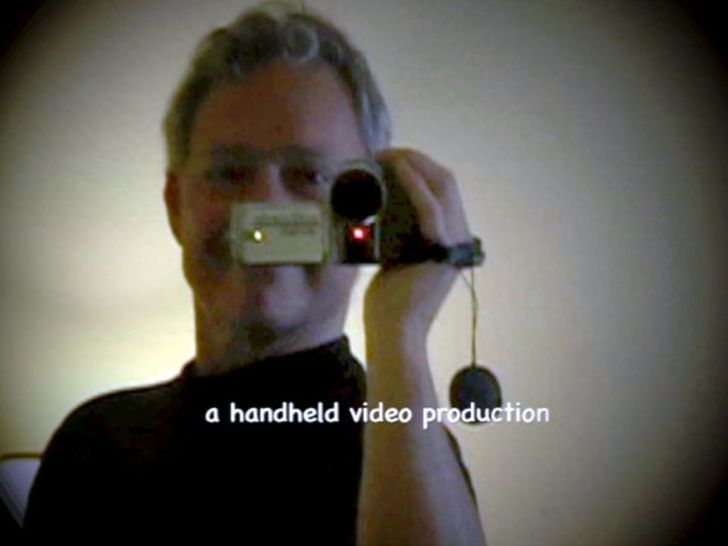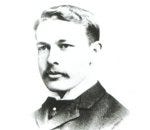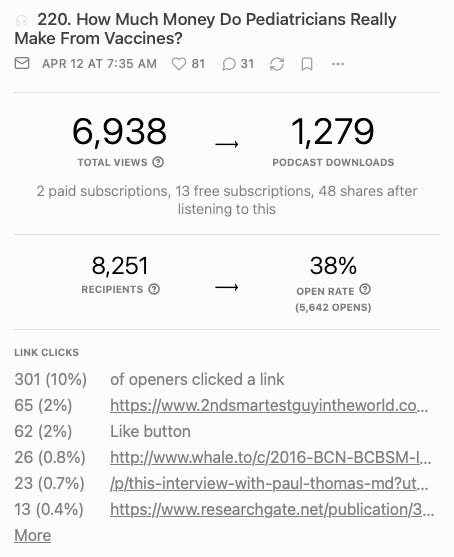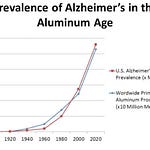Her video interview on Rumble is HERE.
As you get to know Vera, I know you will enjoy her as much as I did. She is an entirely upbeat person who has had a terrible trial by fire. The road to her cure involved more than a decade of painful treatments that damaged her health, but she has been disease-free now for twelve years. Vera was sent home to die by her oncologists, but since she had been managing the online patient groups, she knew she had alternatives.
Wiki:
Coley's toxins (also called Coley's toxin,[1] Coley's vaccine,[2] Coley vaccine, Coley's fluid or mixed bacterial vaccine) is a mixture containing toxins filtered from killed bacteria of species Streptococcus pyogenes and Serratia marcescens, named after William Coley, a surgical oncologist at the Hospital for Special Surgery who developed the mixture in the late 19th century as a treatment for cancer.[3]
Their use in the late nineteenth and early 20th centuries represented a precursor to modern immunotherapy, although at that time their mechanism of action was not completely understood.[4] Many important aspects of the mechanisms of action, such as that involving T-cells and NK cells, have been more recently identified.
The FDA-approved BCG for non-muscle invasive bladder cancer is a highly related strategy of Coley's toxin.
Here is Vera's article about her lymphoma odyssey from her old blog:
How I Beat the Reaper
Posted by leavergirl under healing
In 1995, still trying to get pregnant, I was diagnosed with immune system cancer. It was a moment that changed my life. I can still feel the echoes of that shock. I still remember my first oncologist trying to push chemo on me. When I asked for information about the substances he was recommending, his nurse rummaged through dusty closets and came up with nothing. I found a way out of despair by learning all I could to save my life. Non-Hodgkin's B-cell lymphoma comes in three varieties: slow-growing, intermediate, and fast-growing. The fast ones are often curable but rare. The slow ones are best not to treat right away (that first oncologist was a greedy liar) and respond well to chemo initially, but eventually they'll turn intermediate and kill you. Median survival? 7-9 years. Ugh. One thing I hold against conventional medicine is that the way it presents information to patients is so damn depressing.
I spent several years studying both the conventional side — finding more hopeful statistics — (thank you, Fox Chase Cancer Center, for making your library so patient-friendly!) and the "alternative" side. The alternative side is good at giving people hope and pluck. I spent some time experimenting with various recommended concoctions. And while sifting the dross from the potential gold, which included talking to other lymphoma patients who also had the gumption to experiment, I found two alternative treatments that merited an "A" on my scale. One wasn't helpful for lymphoma, which is usually disseminated (metastasized) by definition. That was hyperthermia (which has since made limited inroads into conventional cancer treatment). The other one was Coley's toxins. I wrote one of the first well-researched internet articles on the toxins. The American Cancer Society had blacklisted Coley's toxins for many years as a quack treatment, and these are not conventionally available to this day. They are cheap to make and unpatentable.
My approach, recommended by my next oncologist, was to do "watchful waiting" until the disease progressed. When it did, I availed myself of the various toxic drips they give to cancer patients. By then, they were accompanied by monoclonal antibodies — bioengineered thingies that run through the immune system, gobble up B-cells, and improve the chemo's effectiveness. I also did a rare treatment that gave me a year of remission called Bexxar. But after this, in '07, the lymphoma speeded up (underwent "cellular transformation") and tried to kill me. I got hit by very harsh chemo and spent that summer doing treatments, transfusions, and Neulasta injections, weak as a newborn chick, wondering if my hair would ever grow back.
And then came the worst day of my life, when the oncologist (fishing for warm bodies for his transplant program) told me in about 3 minutes that the chemo did not work much, to go home and talk to the hospice. A clinical trial? "Too late," he says! He also had the temerity to push "palliative chemo" on me, which he admitted on further questioning would probably destroy my kidneys and what little remained of my bone marrow. I fantasize every Halloween about going out in a sheet to haunt this SOB.
I grieved terribly for a couple of weeks and then got really mad. I started calling cancer centers from coast to coast, looking for a clinical trial. I was offered various heavy-hitting chemos that would have killed me. I was turned down by a private trial which would have ruined me financially. Then my caregiver drove me to two cancer centers on the off-chance they might have something. The second one paid off. I was accepted into a Danish clinical trial for a new antibody that has since been approved — but not for my kind of lymphoma. Life is full of ironies. And it so happened that I found the only humane oncologist of my entire career as a cancer patient. He looked me in the eye (tumors visibly sticking out of my belly and groin) and said, "I will never give up on you." And he kept his promise. Thank you, doctor Myint!
So… I went through the clinical trial for two months. It helped some. More importantly, it gave me the strength to go to Mexico and begin treatment with the toxins. The trial also bound me to be CT scanned every three months for two years, so my recovery is exceptionally well documented. Four months after I began the toxin treatment, my CT scan showed "massive shrinkage" of all the masses in my belly! What a day! A kidney stent prevented my ureter from being blocked by the masses. The doc who removed it remarked that he never had before in his career as a urologist been able to take one out for a patient with cancer like mine.
A Canadian executive researching immune therapies for cancer noticed my internet article on the toxins. So inspired was he that he actually went to the Library of Congress to pour over Doctor Coley's notes from the early 20th century and then built a lab to replicate his process. He wrote to me to tell me the toxins were about to be manufactured to modern standards, but I lost the letter. I remembered his name when I thought I was dying, and we talked. After looking around, I went for treatment at the CHIPSA hospital in Tijuana, where they taught me how to inject myself with this substance using diabetic needles. It might have been the hardest thing I have ever done. It makes you ghastly ill for a day or two, the injection site is very painful for a week, and you have to do it three times a week. Argh! Horrible. As I lay there waiting for the effects to begin, my caregiver read me Quinn's Ishmael to take my mind off the feverish horror to come. As I understand it, the toxins jolt the immune system into action, recognizing the cancer cells for their threat and killing them.
I got through by faith and stubbornness: I kept repeating to myself that this stuff works, and I'll just keep on doing it no matter what. And so I did, for three years, and it did work. Thank you, Cameron Wookey, Don MacAdam, and Gar Hildenbrand–-the crew that helped me do this heroic thing. I could not have done it without you. And to the CHIPSA hospital, which in its reopened form is providing treatment and hope to many patients, and recently held a big all-paid celebration for us survivors.
I have been in complete remission for nine years now. Although the literature insists low-grade follicular lymphoma is incurable, I have recently begun to think of myself as someone who no longer has lymphoma. Early on, someone told me that when you have cancer, you must throw every book at it. That's what I did. And I learned so much that I knew when to say no to more chemo and take the road less traveled. And it's made all the difference.
Notes from Vera
HERE is the article I wrote in 1998 on Coley's, which inspired Don McAdam in Canada to research it at the Library of Congress and then manufacture it. The link will lead you to my old website's Coley's menu. Click on my Coley's article or the references, and lower down the update lists all the places and people involved in making it available to patients. The other information describes my previous visit to the hospital in Tijuana, where I received the yellow Guatemalan toxins a few times. I did not mention this because I did not notice any changes and did not follow through with the treatment because I lacked trust in that yellow fluid.
Doctor Yoho, during our interview, I forgot about the myelodysplastic syndrome. We were afraid that the inability of my body to recover (CBCs) after bendamustine could flip me into that.
I did not address the few drawbacks of Coley's... er... dangers. I had an anaphylactic reaction. It, fortunately, passed very quickly, but I got an Epipen after that. The other was that I once accidentally shot the fluid into a lymph vessel. I got flying vomits and out-of-control diarrhea, then passed out for two days. Apart from having to do a major cleanup on myself, no harm was done. Ah, the joys of being a pioneer! :-) Neither of these happened again, but I started injecting into my stomach fat after that, thinking that hitting a lymph vessel would be less likely there than in the groin. (Yoho note: this sounds like a vascular rather than a lymphatic injection. Injectors prevent this by pulling back on the syringe plunger to be sure the needle is not in a vessel. If blood shows, do not inject!)
Please note: low-grade lymphoma happens to be a cancer that responds well to mainstream treatments, at least initially. That is why I chose to use all available modalities (excluding a few types of chemo that have poor results). A few cancers are curable with chemo. Others, however, do not respond much, if at all, to current chemo protocols, and if I had one of those, I would have turned directly to alternatives. (Clinical trials are generally not open to patients who have not exhausted the current mainstream options. There may be exceptions. Stephen Jay Gould, for example, went straight into a clinical trial and gained 20 years of life after a dismal prognosis.) The Median Isn't the Message
You know, I am realizing... you are the first medical doctor I have ever spoken to about this. I always felt that letting my doctors know what I was doing would jeopardize their career (possibly) and negatively affect the doctor-patient relationship. So glad you are out there, and may you have a lovely day!
Comprehensive review and many references by a former manufacturer:
Testimonials:
The Cassandra's Memo ebook is free HERE if you promise to send this download link to five or more others. With your help, we will educate some people sitting on the fence. If you have time to write a review at Barnes and Noble, click HERE and scroll down the page until you see the blue "review" button on the right.
BONUS: I am also giving away the Hormone Secrets and Butchered by "Healthcare" ebooks using the same arrangement; you can download them free HERE and HERE if you promise to send the links to your friends.
Substack love
















Share this post